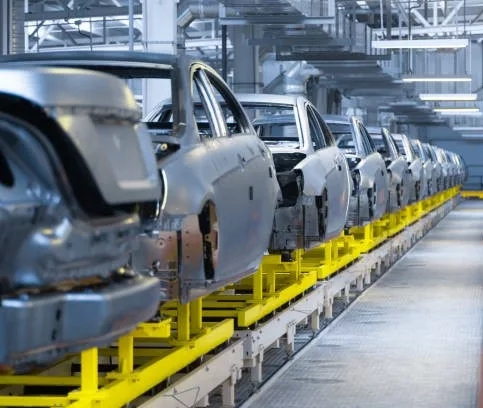Multi-sensor metrology plays a critical role in the automotive industry, enabling the precise and accurate measurement of intricate components that are essential for the safety, performance, and efficiency of vehicles. Modern automotive companies produce a plethora of complex parts, ranging from intricate engine components to intricate bodywork geometries. Automotive companies are increasingly turning to multi-sensor metrology to measure automotive components due to the comprehensive and accurate measurements achievable, that would be impossible or too inefficient using traditional metrology methods.
What is multi-sensor metrology?
Multi-sensor metrology systems are modern measurement technologies that integrate and utilise multiple sensors to collect critical dimensions and complex properties of a component in a single program. Sensors are tailored to capture specific aspects of the feature, ensuring the most appropriate sensor is employed for each aspect being measured, allowing for a more comprehensive and accurate assessment and reporting of the component, from diameters to surface roughness and surface finish.
Why is multi-sensor metrology so vital for the automotive industry?
Enhanced accuracy:
Automotive components must be manufactured to very tight tolerances in order to achieve engine operation and performance. Multi-sensor metrology combines data from multiple, specialised sensors to ensure the highest-level of accuracy for every dimension and surface of the component.
Comprehensive measurement:
Automotive components have complex geometries and a variety of features that require precise measurement. Multi-sensor metrology systems combine optics, probes, and laser sensors to capture dimensional, surface and provide part data to support robust checks and ensure components function at peak efficiency.
Efficiency & speed:
Integrating multiple sensors into a single system saves time and increases productivity as different measurement tasks can be performed without the need for manual sensor changes or setups. Multi-sensor metrology systems automates part inspection to significantly reduce inspection time and improve throughput within the fast-paced automotive industry.
Increased flexibility:
Multi-sensor metrology systems can adapt to measure a wide range of part features, including size, shape, surface finish, and internal structures by programming the most suitable sensor for that specific measurement. This makes them ideal for inspecting complex automotive parts with tight tolerances and a range of intricate features.
Improved quality control:
Multi-sensor metrology systems detailed and thorough inspections improve quality control processes by creating automated measurement reports. Automotive companies can directly compare the measurements to the original design to ensure that the parts meet all required specifications.
Reduced waste:
Multi-sensor metrology systems help automotive companies to reduce waste and costs by amalgamating technology that would traditionally require multiple pieces of equipment into a single machine. The efficiency and adaptability of multi-sensor technology eliminates bottlenecks in production, reducing waste, time and money spent on scrap parts and reworks.
Supporting new developed technologies:
Multi-sensor metrology systems gather essential data on product performance in real-world conditions has been vital in the development and production of new automotive technologies, such as electric vehicles, autonomous driving systems, safety features and crash avoidance systems.






